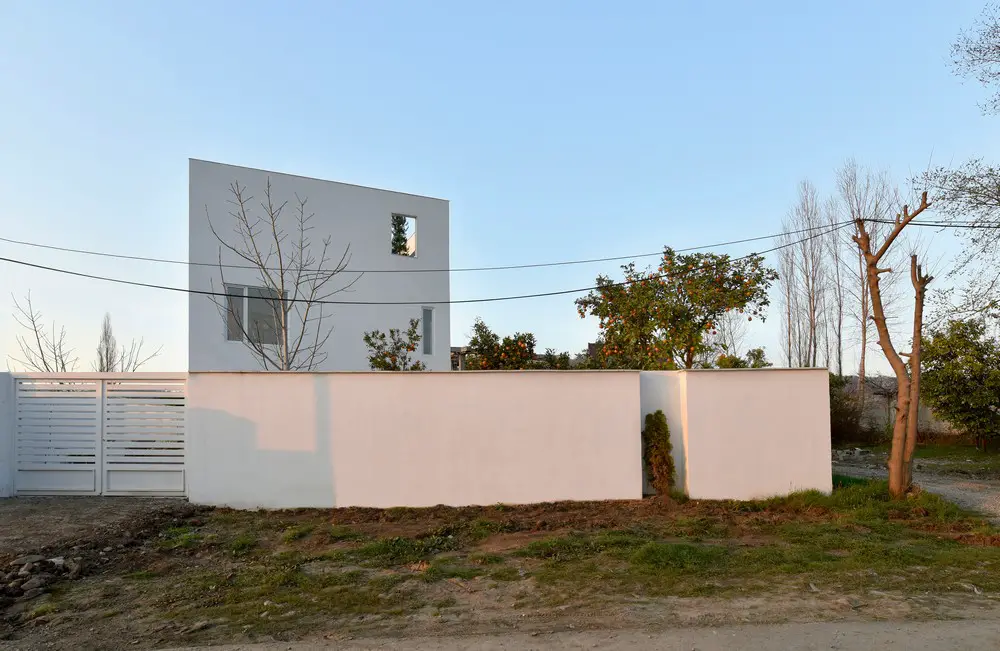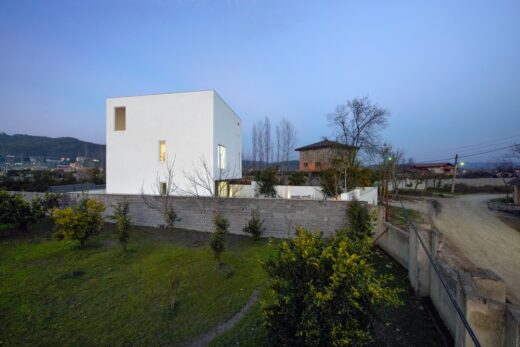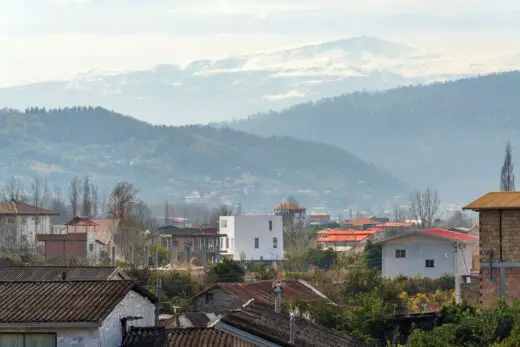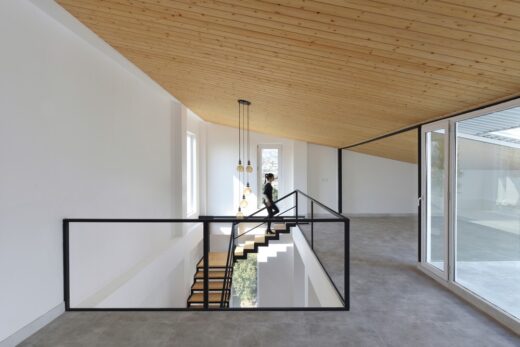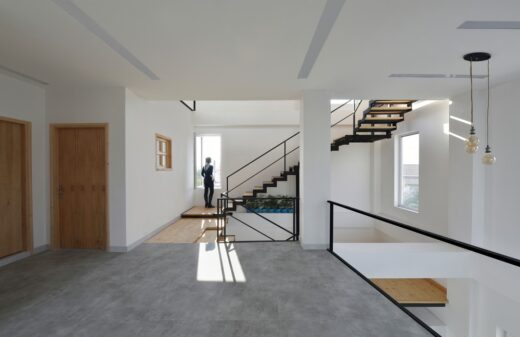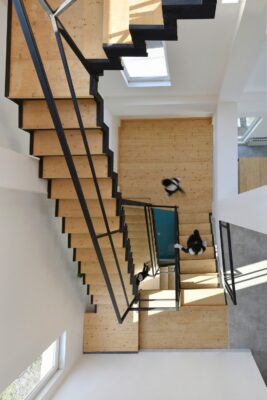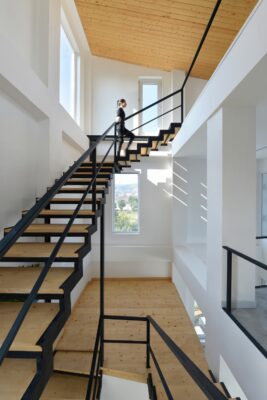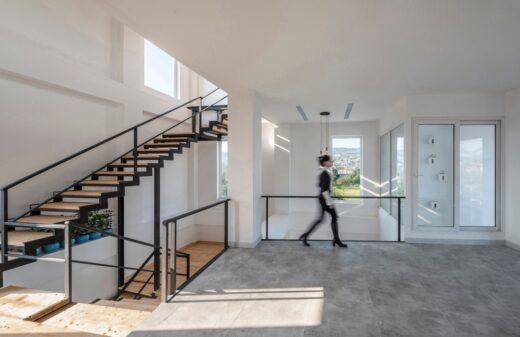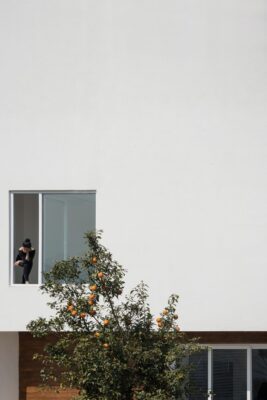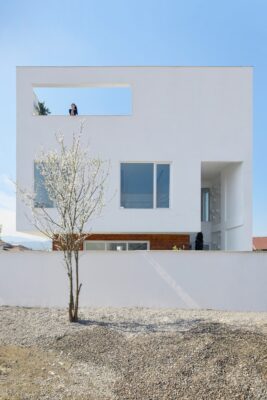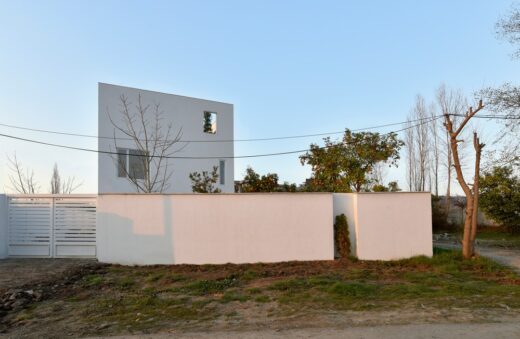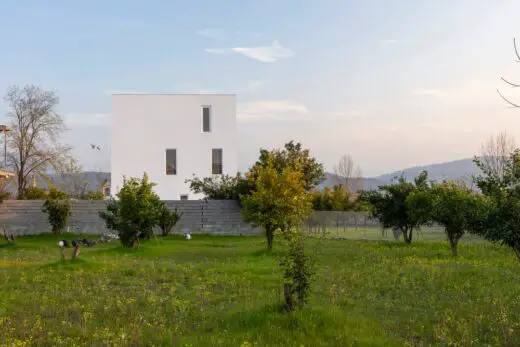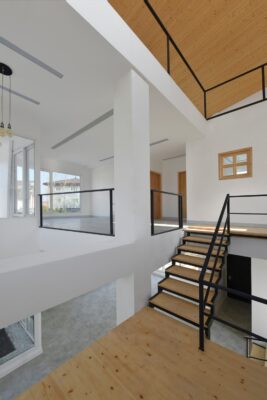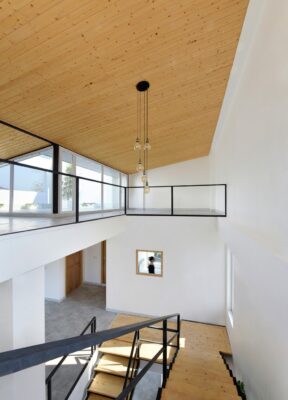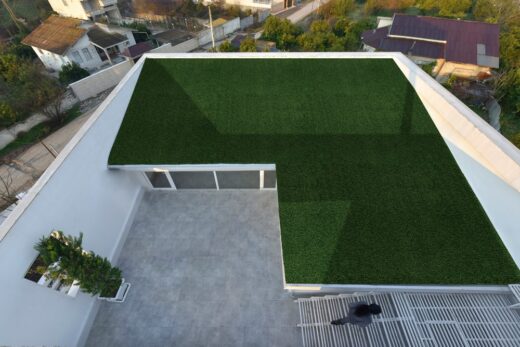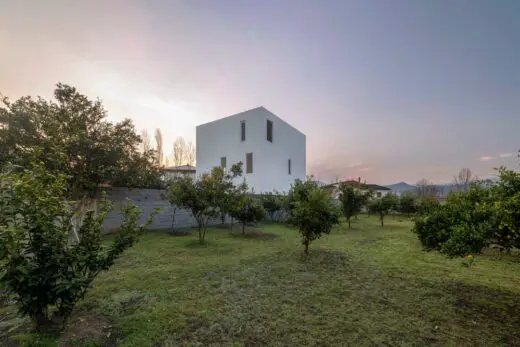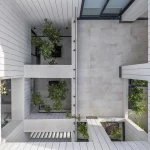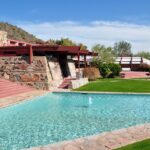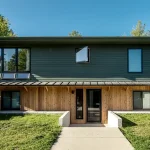Kabootar Khaneh House Mazandaran, Shirgah Villa, Iran Residential Building, New Property, Iranian Real Estate Photos
Kabootar Khaneh House in Mazandaran
26 July 2022
Design: Keivani Architects
Location: Shirgah, Mazandaran, Iran, western Asia
Photos: Deed studio photography
Kabootar Khaneh House, Iran
Kabootar Khaneh (Dovecote)
As the project name suggests, the basic concept behind the design was to create a space for co-existence between humans and birds. After visiting the project site before the design, the architecture team noticed the widespread presence of birds there. Thus, to respect their rights, they decided to design a house where people could live next to them to create an interaction between them that causes a different sense of space to improve its quality. In this respect, inspired by Iranian historical dovecotes, a part of interior space was dedicated for this purpose that acts as a patio due to the use of glass material and the transparency around it.
As a result, the design of the work was practically expanded from the inside out. The interiors were shaped by the creation of the section game and the surface difference in the spaces as well as the specific design of the stairs and voids inside it.
Even the windows of the building were arranged according to the interior section game. Thus, in addition to creating different sequences of view and the outside perspective, we will see the light radiating from different angles, and consequently playing the dance of light with a change in the angle of incidence.
Moreover, this type of window layout design at different angles creates a draught inside that is consistent with the climate of the area. The staircase box is designed in such a way to be different in each floor, and as the centerpiece of vertical circulation, it has evolved into an exciting space that invites you to explore the spaces. Due to the importance of this space, even a window opens to the staircase from one of the bedrooms so that the user can see the stairway section game in addition to the view from the room window on the facade.
Besides, in front of this small window, there is a larger window facing the outside of the staircase that allows one to view the tree from the other side of the courtyard. Furthermore, in the outer volume, architects have used the purest type of volume as a minimal cube to minimize the impact on their surroundings.
Therefore, they opted for the minimalism of the work and the consistency of the white scheme concept. At the same time, due to heavy rainfall, the native and climatic architecture of the area necessitated the use of sloping roofs by architects. Therefore, to maintain the purity of the volume, a green sloping roof is installed hidden behind the walls to respond to this problem as well as to create a different green roof space that has become one of the most enjoyable spaces in the project.
All in all, the interiors and building roof are designed to allow the user to have their backyard in the surroundings, while also inviting you to interact. On the other hand, due to shortage of funds and being located in one of the villages in northern Iran, the design team was forced to use the cheapest materials and native artisans to execute the project. The total budget for the project was about 2.5 billion Rials (about $21,740).
* The interior spaces is formed around the patio where the birds live, by creating cross-sectional play and level differences in the spaces, as well as the special design of the stairs and the holes inside it. To create the most interaction between humans and birds, which helps us feel more peace.
Inspiration:
The basic concept of the design was to create a space for co-existence between humans and birds. After visiting the project site, the architecture team noticed the widespread presence of birds there. They decided to design a house where people could live next to them. Inspired by Iranian historical dovecotes, a part of interior space that acts as a patio due to the use of glass material and the transparency around it. The interior spaces is formed around the patio. The also inspired from sections, voids and stairs of traditional architecture
Unique Properties / Project Description:
Perhaps what sets this building apart is its new look at biophilic architecture, Architects have always paid attention to the use of plants and light and water. But this house has become a place for more interaction; birds. This is a house for humans and birds. In this respect, inspired by Iranian historical dovecotes, a part of interior space was dedicated for this purpose. The interior spaces is formed around the patio where the birds live, by creating cross-sectional play and level differences in the spaces, as well as the special design of the stairs and the holes inside it.
Operation / Flow / Interaction:
To create the most interaction between humans and birds, which helps us feel more peace. Even the windows of the building were arranged according to the interior section game. Thus, in addition to creating different sequences of view and the outside perspective, we will see the light radiating from different angles, and consequently playing the dance of light with a change in the angle of incidence. Moreover, this type of window layout design at different angles creates a draught inside that is consistent with the climate of the area.
The staircase box is designed in such a way to be different in each floor, and as the centerpiece of vertical circulation, it has evolved into an exciting space that invites you to explore the spaces. Due to the importance of this space, even a window opens to the staircase from one of the bedrooms so that the user can see the stairway section game in addition to the view from the room window on the facade. Besides, in front of this small window, there is a larger window facing the outside of the staircase that allows one to view the tree from the other side of the courtyard.
Furthermore.in the outer volume, architects have used the purest type of volume as a minimal cube to minimize the impact on their surroundings. Therefore, they opted for the minimalism of the work and the consistency of the white scheme concept. At the same time, due to heavy rainfall, the native and climatic architecture of the area necessitated the use of sloping roofs by architects. Therefore, to maintain the purity of the volume, a green sloping roof is installed hidden behind the walls to respond to this problem as well as to create a different green roof space that has become one of the most enjoyable spaces in the project. All in all, the interiors and building roof are designed to allow the user to have their backyard in the surroundings, while also inviting you to interact.
Project Duration And Location:
The building designed in September 2017 in Tehran and the construction works finished in September 2018 in Shirgah, Mazandaran, Iran.
Production / Realization Technology:
Due to the lack of budget and according to the design thinking line in order to respect nature, cheap and sometimes recycled materials were used in the construction of the building. All the wood used in the construction of the building, such as the facade and sloping roof, stairs, doors and windows, are made of old wood recycled from the old buildings of the place, which was cut and sanded by the construction team.
The rocks used in landscaping are sedimentary rocks in the village that were collected and used in the site. A form of sloping roof was used in this building that had not been used before. In fact, the sloping roof are hidden behind the walls to maintain the cubic and minimalist form of the building. And rainwater is collected on the roof surface by drainage and utility pipes. And is used for irrigation of site plants
Research Abstract:
If a person were to imagine a setting of complete relaxation, odds are the first image that comes to mind is a place surrounded by nature. Architects team was searching for design solutions that will resonate well into the future, turning to ‘biophilia’; as an important source of inspiration that promotes well-being, health, and emotional comfort. The main strategy is to bring characteristics of the natural world into built spaces, such as water, greenery, natural light, elements like wood and stone. As well as establishing a visual relationship, for example between light vs shadow.
To achieve this goal, the design team began extensive studies on the traditional architecture of the region and finally decided to search more about historic pigeon houses in Iran, which is a symbol of good human coexistence with birds in the past. On the other hand, comprehensive research was conducted on the architecture of the indigenous houses of the region, such as air circulation, how to deal with climatic issues, spatial arrangement diagrams, vertical and horizontal connections such as stairs, corridors, screens, and the game in general. Which in conclusion of researches made the architecture of the building very simple and minimal, which at the same time has a different and attractive architecture in difference levels section and architectural atmosphere that will cause more users to interact with it.
Challenge:
The main challenges of the design team were how to create an atmosphere where humans can live together with birds but in kind of coexistence such a way that the independence, peace, and security of each is not lost. On the other hand, it must be made an interaction space between birds and different spaces inside the human house to affect the mood of the residents. Another challenge was the very limited budget that led the architects to a minimalist work.
Kabootar Khaneh House in Mazandaran, Iran – Property Information
Client: Masoud Adnani
Architect: Keivani Architects – https://keivaniarchitects.com/
Principal Architects: Nima Keivani and Sina Keivani
Design team: Mahboobeh Shakeri, Sahar AminalSharieh Najafi
Site area: 332 sqm
Gross Floor area: 210 sqm
Location: Shirgah, Mazandaran, Iran
Status: Built
Project start date: September 2017
Cost: 22000$
Specifications / Dimension / Package / Technical Properties:
Field area 332 square meters (24.5 meters of length, 13.5 meters of Width), Ground floor area is 67 square meters, total built area 210 square meters, the buildings Height 10.6 meters.
Instagram: @keivaniarchitects
Instagram: @nimakeivani
Linden: @nimakeivani
Primary Function:
Villa
Team Members:
Kabootar Khaneh by Keivani Architects, Principal Architects: Nima Keivani & Sina Keivani, Design team: Mahboobeh Shakeri, Sahar AminalSharieh Najafi Graphic: Mahsa Kiani & Azin Hadizadeh, client: Masoud Adnani, construction manager: Masoud Adnani, Project Manager: Nima Keivani & Sina Keivani and BIM Manager: Sina Keivani
Photographer: Deed studio photography
Kabootar Khaneh House, Mazandaran Iran images / information received 260722 from Keivani Architects
Location: Isfahan, Iran, South Asia
Iranian Architecture
Iran Architecture Designs – chronological list
Cantilever House, Mosha, Damavand, Amol, Māzandarān
Design: uc21 architects
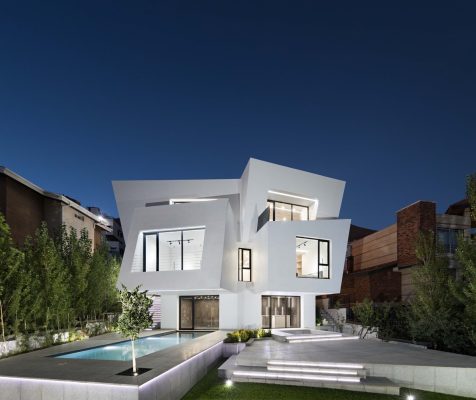
photo : Mohammad Hassan Ettefagh
Cantilever House in Mosha, Damavand
Cubes Warehouse Tehran, Shamsabad Industrial Park, Tehran
Design: Nazar Idea Paidar Company
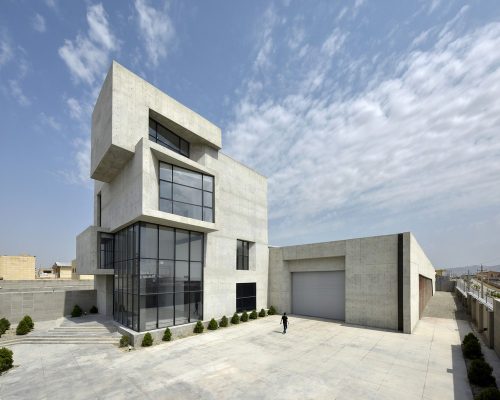
photo : Deed Studio
Cubes Warehouse in Tehran
Lotus Amphitheater Building Design
Design: Peyman Kiani Architects (PKA)
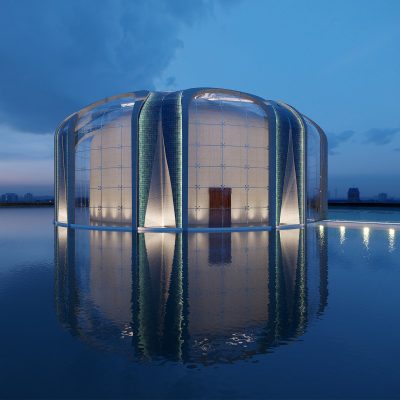
rendering : Mohammad Ali Rezaeiyan
Lotus Amphitheater Building Design
Comments / photos for the Kabootar Khaneh House, Mazandaran Iran design by Keivani Architects page welcome

